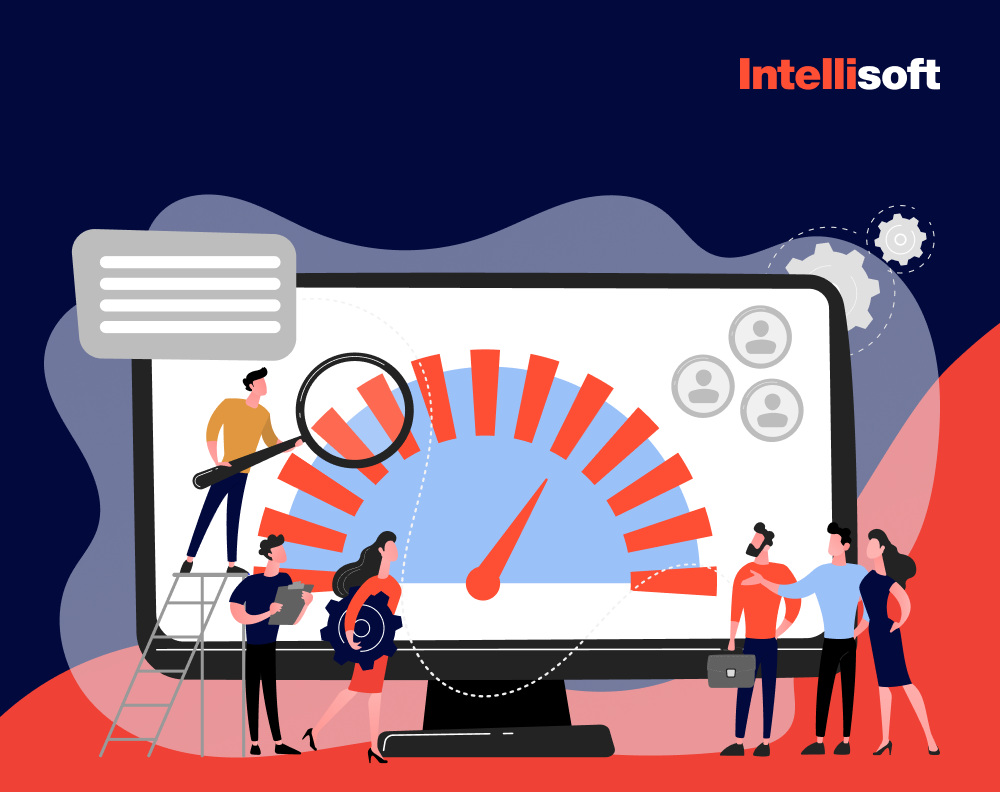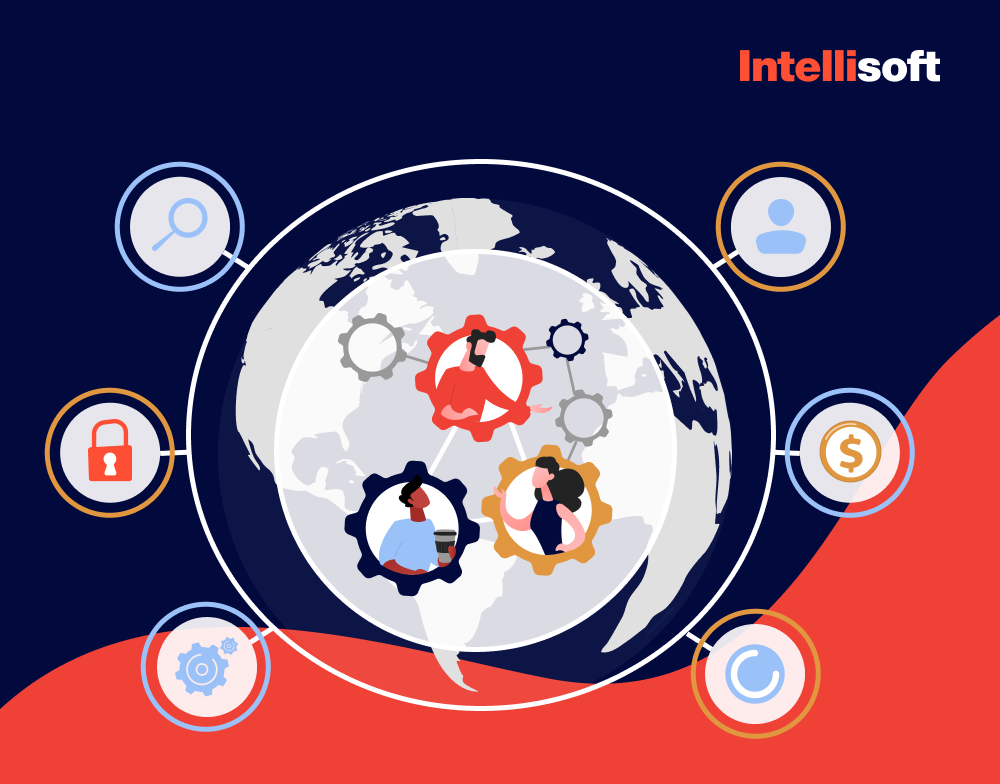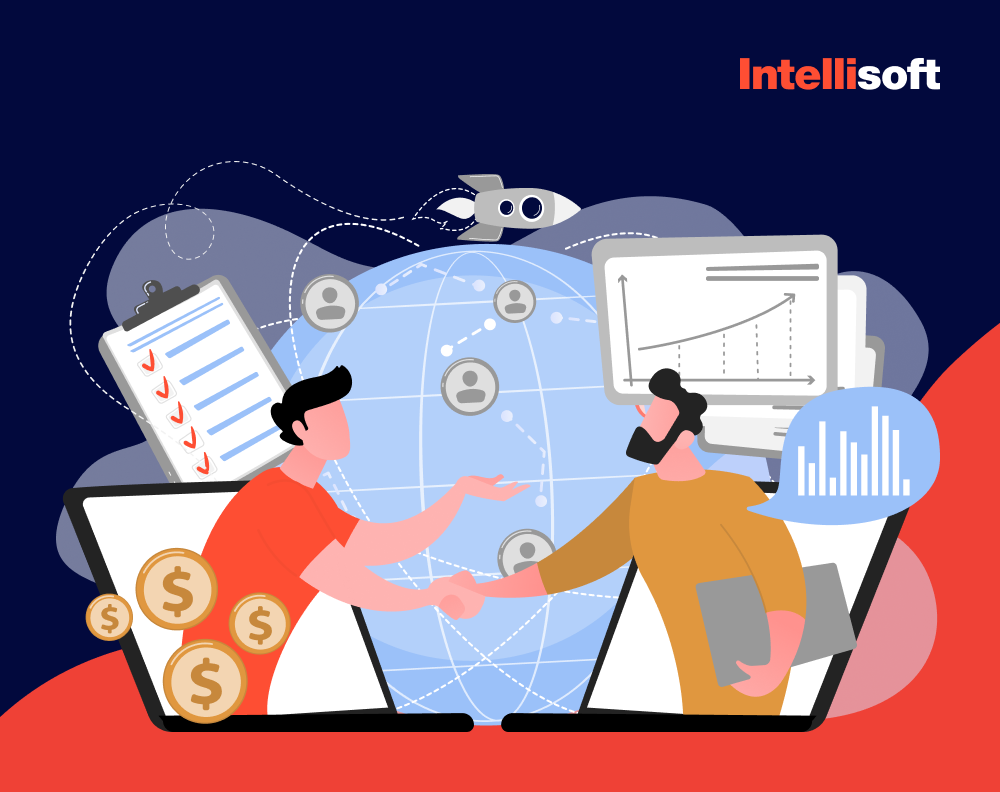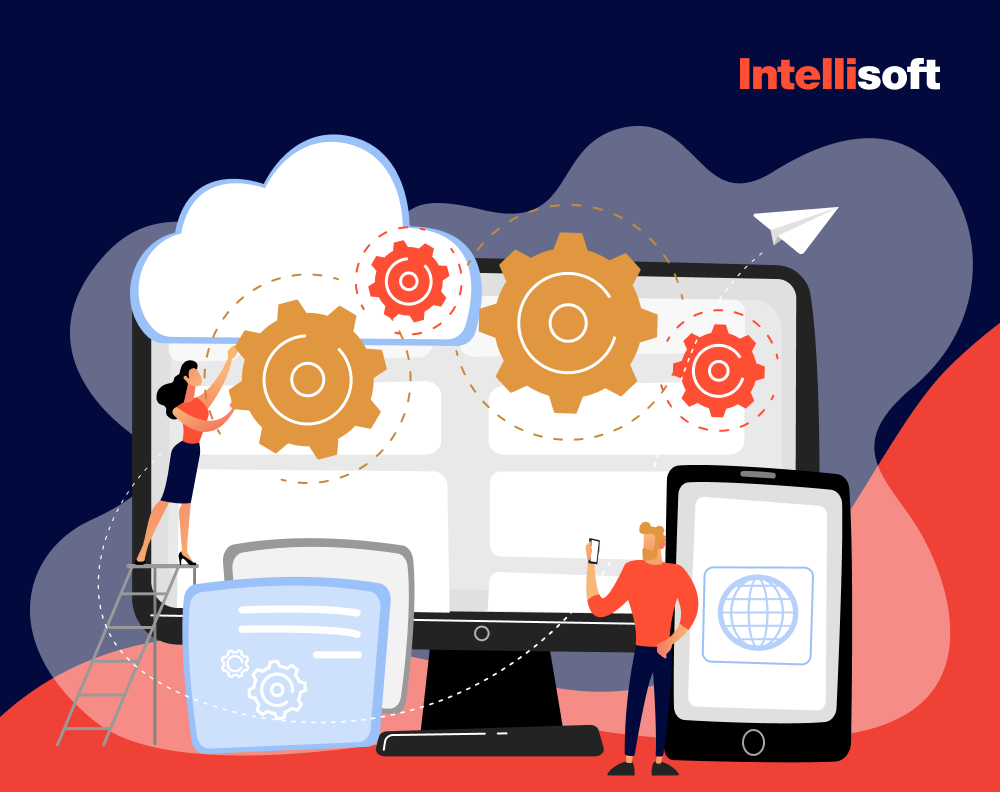Transforming a groundbreaking idea into a functional digital product is no small feat—it requires the right team of experts. Yet, finding and keeping top IT talent can be a significant hurdle. Rather than investing in an expensive in-house team, many companies are now opting for outsourcing and outstaffing (also known as IT staff augmentation) to fill the gap.
The numbers speak for themselves. According to a report by Grand View Research, Inc., global spending on outstaffing vs outsourcing is projected to soar to $936.6 billion by 2027, with an impressive annual growth rate of 7.7%. This isn’t just a fleeting trend; it’s rapidly becoming the standard practice in the IT sector.
So, why are businesses increasingly looking beyond their own organizations to find talent? The primary reasons boil down to the high costs associated with hiring and maintaining permanent staff, alongside a scarcity of qualified professionals. By tapping into IT staffing services, companies can access a vast pool of talent. With geographical boundaries no longer an obstacle, you can find the right experts for your needs, regardless of where they are located. Moreover, this strategy often proves more cost-efficient, as salaries are typically based on the local market of the workers. For instance, hiring a skilled professional from a country like Ukraine can be as much as 50% more affordable than recruiting someone with the same expertise in the United States.
It’s evident that collaborating with an external vendor can offer substantial advantages for your business. But the decision between outsourcing vs. outstaffing models still looms large. What exactly distinguishes the two, and how do you determine which model best suits your requirements?
Though these two approaches might seem alike at first glance, there are key differences that set them apart. Let’s explore what truly makes each one unique.
Table of Contents
Introduction to Outsourcing and Outstaffing
First, let’s understand these two concepts. How they are similar, and how to distinguish outsourcing from outstaffing. Both concepts denote a special relationship between the company and employees outside the central workforce.
These models play a significant role in organization development and the individual processes’ execution.
What Is Outsourcing?
This is the practice of transferring certain tasks and functions by the client company to the contractor company, specializing in the relevant field. This term appeared in the mid-80s and originally sounded like outside resourcing.

So, the interaction model can look like this: Client — Project Manager — Development Team
A unique characteristic of the IT outsourcing model is that the employees you choose will perform all aspects: from testing to design. As for communication, you will only interact with the project manager from the outsourcing group, to whom you will communicate your deadlines, updates, and requests.
What Is Outstaffing?
This is another option for remote employment. In this case, the client personally controls the scope of work and hires employees from another company. At the same time, the issues of wages are decided by the contractor (outstaff company) and everything that deals with bonuses and equipment.
At the same time, the client company assigns work and tasks. Thus, there is no need to look for performers for your lice company. Instead, this will be done by the outstaff company with which you agree on the project’s details and deadlines. They select the right professionals from their talent pool for your tasks and requests. As a result, you have the right performer or team for your project.
Difference Between Outsourcing and Outstaffing
The difference between these concepts is that outsourcing transfers authority to a contractor to perform a specific business process. As for outstaffing, this is the registration of personnel in the contractor’s staff.
Also, in the case of outsourcing, the contractor is looking for employees for the customer’s company and formalizes them in its state. When running out of staff, the contractor assigns employees of the customer enterprise to its personnel.

However, there is one thing that is common for these two models. The client manages the project processes in both cases, but in different ways, depending on the model.
Pros & Cons of Outsourcing
Outsourcing certainly has a huge number of advantages, but don’t forget about the disadvantages. Let’s talk about everything in detail.
Outsourcing Advantages
A business model like outsourcing is definitely worth your attention if you are looking for opportunities such as:
- Reduced costs. It is generally cheaper to outsource a freelance development team than find and hire full-time employees. In particular, if you live in the United States, you know how high software development prices are. In this regard, it’s much cheaper and more efficient to hire contractors from Eastern Europe or Asia, for example.
- Access to a large pool of talent. You are not limited in your choice, as you can hire specialists with a set of unique skills around the world.
- Less responsibility and less time spent. Since the client does not need to lead the development team, there is no need to delve into the technical specifics of the process.
- There is no need for hardware and software to buy. Because this issue will be decided again by your contractor, he will be responsible for all these costs and will take this into account in the estimate for his cooperation with you.
- Quality is not your responsibility. It’s about the quality and consistency of the code for your project. You do not need to track the correctness and quality of the code because this is the vendor’s concern. This means that you do not need to have any specific skills.
- As well as hiring staff. The contractor will take care of finding the most suitable candidates. They have enough personnel reserve, experience, and a way of attracting new specialists. You can also forget about the headache of selecting and hiring specialists.
- Fast start. As a rule, outsourcing companies have different human resources. What’s more, their technicians can get started immediately. Therefore, it is also ideal for those with too little time.
So, outsourcing is a great alternative to setting up an internal department or handing over a number of tasks to employees who are already in the organization.
Outsourcing Downsides
With all the advantages of this business model, outsourcing also has its downsides. Fortunately, there are fewer of them than advantages, and they are as follows:
- Communication problems. This problem is perceived especially acutely when there is a large time difference. This can lead to misunderstandings that affect work quality. Therefore, there is a need to consider all the necessary connections, channels, and communication procedures.
- Risk of leakage of important data. By transferring data to a third party, you run the risk of data leakage. Therefore, it is very important to look for bona fide and reliable contractors with a good reputation and reviews.
- It is more expensive than outstaffing. Of course, full management and commitment come at a higher cost. You have to pay the IT executives and the project managers, HR officers, and other team members who coordinate your project and your account.
- The vendor controls the project. This is both an advantage and a disadvantage. For example, if you want to manage a project personally, monitor the quality and process of implementation, outsourcing, unfortunately, will not give you this opportunity.
However, this will not create too many problems for you if the outsourcing fulfills your project tasks and your requirements.
Related readings:
- Most Effective Ways to Extend Your Software Development Team
- CTO-As-a-Service: The Ultimate Guide
- Hire Python Developers Full-Time or Part-Time: Hints from Experts
- Hire PHP Developers Full-Time or Part-Time: Hints from Experts
- 11 Software Developer Soft Skills Every Programmer Needs to Succeed
Pros & Cons of Outstaffing
Essentially, this model gives the client the ability to have professional developers on the project team without having to pay high prices and taxes.
Outstaffing Advantages
As with outsourcing, outstaffing has a number of advantages and disadvantages that you should be aware of. Here are the main benefits:
- Elimination of labor disputes. Since the employee enters into an employment contract with the outstaffing company and not with the ordering company, the latter does not participate in labor disputes that may arise.
- Human resources management is simplified. The outstaffer company deals with all documentation, from the registration of vacations and sick leaves to the writing of reports. This reduces the burden on the administrative department and accounting department of the client company.
- There is no need to deal with all financial issues. Outstaffer deals with all issues related to the calculation, accrual, and payment of salaries and bonuses and taxes, and various fees. The customer only makes the payment that is stipulated by the contract.
- Reduced costs. Since you manage your team yourself, outstaffing is more cost-effective than outsourcing.
Also, it should be noted that such management provides the client company with legal protection in resolving personnel issues. In this case, all risks associated with employees are transferred to the outstaffer company, which is a legal employer.
Outstaffing Downsides
As for the disadvantages, outstaffing does not have many of them. More precisely, they are as follows:
- Communication problems. As in the case of outsourcing, when working on the outstaffing principle, problems may arise associated with a misunderstanding of certain tasks. Therefore, it is very important to set up and maintain communication channels that are convenient for both parties.
- Great responsibility. If you choose an outstaffing model, be prepared to take on more responsibility. It is recommended to have tech-savvy experts on your team for more effective management.
The main problem boils down to the fact that if the channels are not well established, you may have problems with communication and understanding of tasks.
What Would Be Best for Your Project?
Any company needs good specialists, but not everyone has all the necessary capabilities and resources to recruit and maintain a vast staff. That is why many companies use outstaffing and outsourcing services. The choice of one of the models largely depends on your business’s initial needs, goals, and capabilities.

Suppose your company is not too technology-oriented and you do not have in-house specialists to oversee the work of a remote development team. In that case, outsourcing is the most suitable option for you. On the other hand, if you have already set up some IT processes and have everything you need to manage and work with a remote team, feel free to choose outstaffing. However, do not forget that each case is unique, so we recommend that you first consult with specialists.
Cost of Outsourcing and Outstaffing
As we said, the cost of outstaffing is lesser for several reasons, and here’s why.
First, the price of outsourcing involves some additional costs, namely:
- Developer’s salary
- Product delivery risks
- Overheads
- Vendor fee
Don’t forget about spending on non-technical talents like project managers and business analysts. As for outstaffing, it cuts several costs, leaving only two main items: vendor fee and developer’s salary.
How much you pay a developer depends on the region where you hire him. Today,prices differ as follows:
- Eastern Europe — $30-65
- Latin America — $35-70
- Africa — $25-45
- Asia — $20-45
In fact, it isn’t easy to calculate the average rates for outstaffing or outsourcing because prices vary from specialist to specialist. Add also country features, additional costs, and fees.
A Few Tips for Outsourcing or Outstaffing Team Hiring
There is no problem finding a team with cheap services. But what about diligence and quality? This can be said not about all outsourcing or outstaff agencies. Several criteria will help you find the right company.
- Request a portfolio.
- The team must be fluent in English.
- Pay attention to the time zones that separate you.
- Ask about work procedures and invoices.
Also, pay attention to the campaign’s reputation, profile, and experience.
Choose the Proper Outsourcing with IntelliSoft
IntelliSoft is a reliable guide to the world of IT outsourcing and outstaffing. The company offers everything for the implementation of a project of any complexity and any requirements:











